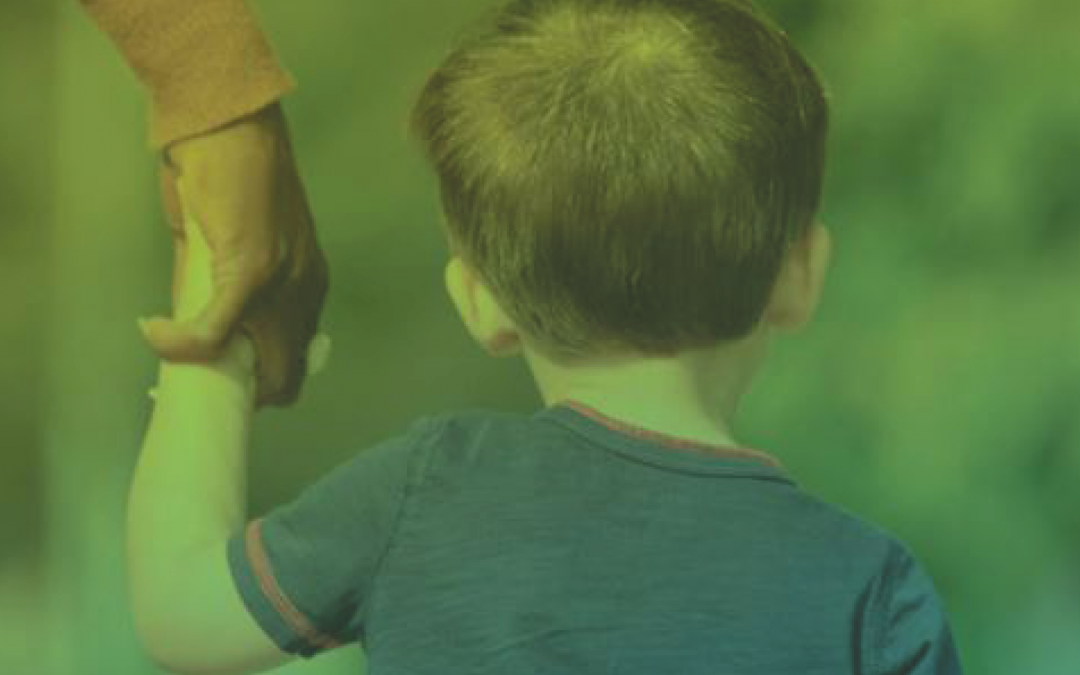
by IABA Team | Oct 5, 2021
Many people with ASD (autism spectrum disorder) need support when learning specific skills or new behaviors that are positive and functional. ABA therapy can be very effective with teaching skills in these common areas:
- General social skills
- Communication
- Self-help
- Motor skills
- Play skills
- Leisure activities
- Independent daily living
How is ABA Therapy Beneficial?
The basis of ABA therapy is to identify why a person engages in a particular behavior followed by creating environments that support effective, lasting change for the better. When new, helpful behaviors bring about good results, old, unhelpful behaviors begin to decrease.
ABA therapy provides beneficial information on:
- Why behaviors occur
- How certain environments can affect behavior
- The best way to create a beneficial, long-lasting therapy plan
- The most effective therapy models for changing individual behavior
ABA Therapy Expectations
ABA therapy can be conducted in clinics, schools, outside settings, and inside the home. ABA programs are managed by Board Certified Behavior Analysts (BCBAs), who are Masters-level professionals and direct care providers. In most cases BCBAs are Registered Behavior Technicians (RBTs), which is a national certification.
The role and responsibilities of the BCBA include:
- Developing a treatment plan
- Helping parents and other caregivers manage treatment plans
- Developing and conducting progress assessments
- Monitoring work conducted by other direct care providers
Depending on the intensity of the treatment, BCBAs may work with the child and direct care anywhere from multiple days per week to a few days per month.
Direct care providers are closely monitored by BCBAs to make sure the correct therapy program is being followed. It is imperative that any comprehensive ABA therapy programs are followed by all caregivers, from teachers to parents. Talking to your BCBA will help you understand their therapy program.
Typical therapy sessions include play, practicing daily activities like toileting or dressing, and structured teaching activities. ABA Sessions are customized for each child’s strengths and needs and designed to improve the quality of life for both the child and their family.
Helping parents with continuing therapeutic practices at home is a critical part of ABA therapy. Without continued reinforcement, certain behaviors may take longer to learn or even regress.
ABA Therapy from IABA Consultants
If you have questions regarding autism treatment, education, or plans using ABA therapy, we are here for you! Our goal is to make sure no family is turned away due to financial constraints. Our therapy team would love to talk to you. Find the location closest to you and give us a call. We’re here for you.
Sources
Arizona Autism United
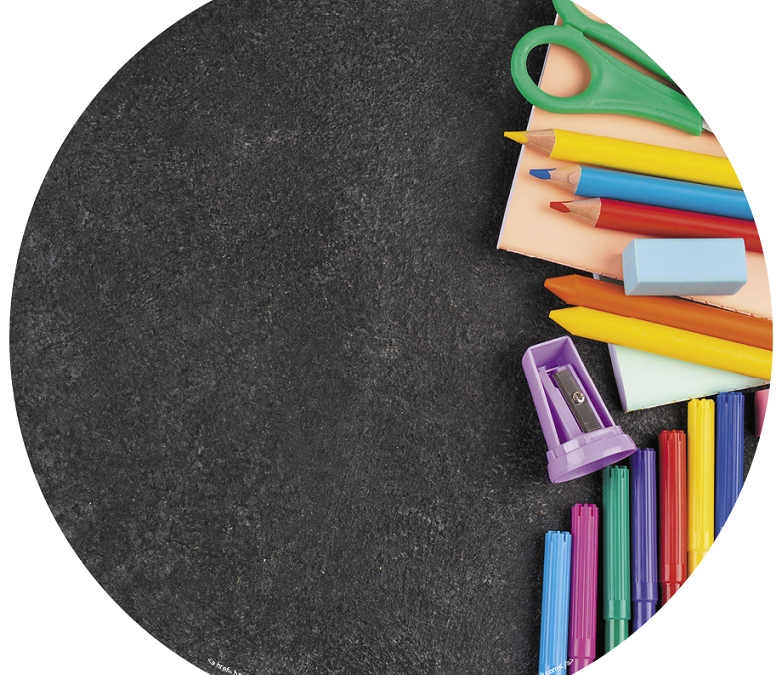
by IABA Team | Sep 6, 2021
We recently wrote a blog on what to do to start a smooth back-to-school transition for kids with ASD. The blog was fairly dense, so this one is going to take a more compact look in a checklist form for back-to-school needs.
ASD School Supply Checklist
Each school, daycare, or therapy clinic will have different requirements for school supplies. Before looking at our general list, you’ll definitely want to look over any list of supplies or materials provided by your child’s school.
The following are general items with brief guidelines to help you remember what your child may need at school.
- Lunch box. Having a reusable lunch box with compartments may help your child get into a regular lunch routine. Buying several of the same lunch boxes can help if you don’t have time to wash one every day. Compartments in lunchboxes can help your child understand where their regular lunch foods will be every day.
- Comfortable Clothing. Make sure your child is comfortable with all of the clothing they will be wearing to school. This is especially important for children with sensory issues as new clothing may not be comfortable. Be sure to have your child wear any new clothes at home before sending them to school in a new outfit. Buying the same outfits may also help some children get into a routine for school every day.
- Comfort Items. Make sure your child has their favorite comfort item to bring to school each day. Things like stuffed animals or a favorite blanket may help your child settle into a comfortable routine at school each day.
- Consistent School Supplies. After looking at a supply list provided by your child’s school, go shopping with your child and allow them to pick versions of the supplies they are comfortable with. Remember to buy extras of expendable supplies so they will have the same item they are comfortable with after the first one is done.
- Organized Backpack. A backpack with extra pouches or internal dividers is a great way to set up your child’s bag for easy use that can help them get into a regular school routine. Putting things in the same place can help them remember where their things are throughout the school day.
- Sensory Items. If your child has specific sensory issues, be sure to have a specific sensory comfort item packed in their backpack. Textured items like smooth stones or blankets made from specific materials can help if your child needs comfort during the school day.
- Books. Packing specific books can also help your child deal with difficult times during school. Books are a combination of comfort items and sensory items, as a teacher or aide can read the book to them if needed.
- Emergency Sheet. Be sure to include any information a teacher, aide, or therapist may need in your child’s bag. This sheet should include any and all information regarding sensory issues, specific behavioral issues, preferences, and anything else they may need to know if your child is having a difficult time.
- A Phone for Emergencies. This is not a phone for your child, but a phone for the teacher to use if your child really needs a parent. Definitely talk to your child’s school about policies and procedures for phones–don’t just pack one in their backpack. A basic flip phone is all that is required for emergencies where a parent is needed right away.
Remember, not all of these things will be required for your child. This list is for supplies you may have forgotten as the school year got here. Think of it as a list to jog your memory or help you modify school supplies to fit the needs of your child.
ABA Therapy from IABA Consultants
If you have questions regarding autism treatment, education, or plans using ABA therapy, we are here for you! Our goal is to make sure no family is turned away due to financial constraints. Our therapy team would love to talk to you. Find the location closest to you and give us a call. We’re here for you.
References
50 Back-to-School Tips from Autism Moms, Angelsense
Back To School Tips For Families With Autistic Children, Art of Autism
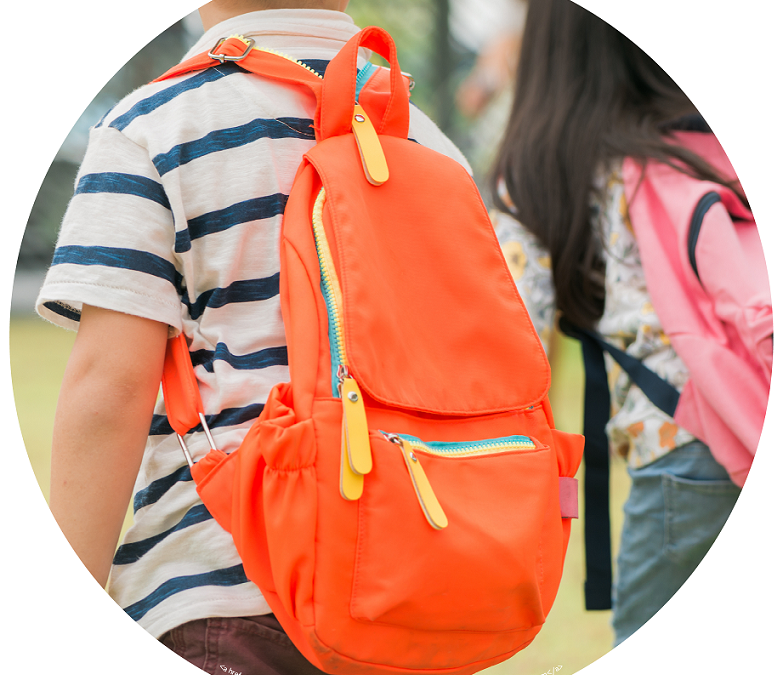
by IABA Team | Aug 17, 2021
Going back to school is tough for most kids, but especially so for kids with ASD. The change of scenery & routine from summer break to a school setting can be tough. The COVID-19 pandemic has made things especially difficult, which affects kids who were used to digital or in-home learning during the last school year.
So, how can we make it easier for kids with ASD to transition back to an in-school environment? There are many things that can be done, so let’s take a look.
Develop a Plan with Your Child’s Therapist or Doctor
Developing a plan with your child’s therapist, doctor, or other healthcare providers can help children with ASD smoothly transition into a new school year. Putting a plan in motion with rules & methods that will be consistent in school, therapy, and at-home settings can make a world of difference.
Make sure to have a clear schedule complete with calendar dates so your child is aware of the coming changes. Talking with your child’s therapist or other healthcare providers can help you select the best way to count down to important milestone days on your calendar.
Make a List of Your Child’s Skills & Needs
Having a prepared list of your child’s skills and needs will make any discussions with teachers or administrators easier. Being able to quickly ask and answer questions will allow you to get a full picture of what your child will need to expect.
Be sure to list strengths, weaknesses, sensory issues, and any other important parts of your child’s ASD-specific behavior. Having a list of these issues will help you quickly and efficiently communicate the needs of your child. Talking to your child’s therapist or doctor can help you build a list that will be sure to mention any special needs.
Talk to a School or School District Administrator
Finding out how your child’s school or school district helps children with ASD is a huge priority for your back-to-school plans. Learning about the specific resources available for your child at school will help you make decisions about the school year.
Depending on the level of care your child needs, some school districts offer great special education programs geared towards kids with ASD. Sometimes different options are available for students with ASD, allowing parents to select the best option for their child.
This is just general information–every school district is different. To find out pertinent information for your situation, please contact the local school district. It may be wise to check out several surrounding school districts if you don’t like the programs from the district you live in.
Visit Back-to-School Settings Before School Starts
Taking your child to the school they will be attending early a few times may help them get used to the new setting. Walking through the hallways & classrooms, looking at the gyms & washrooms, and checking out the playground may help familiarize your child with the school. Try to get your child as comfortable as possible with the new school before the year starts.
An even better way to familiarize your child with their new setting is getting to meet their teachers several times before the school year. Getting to know the teacher or therapists at the school can help your child get comfortable with their new setting.
Re-Establish a School Schedule
It is very important to get your child back on a regular daily schedule before school starts. Establishing consistent bedtime and morning routines will help your child be ready for school. Starting this schedule a few weeks prior to school can help get your child on track for the school year.
Other scheduling issues may also be important. Here are a few examples of other scheduling things to keep in mind:
- Transportation times
- Eating times
- Nap times
- After school routines
- Weekend scheduling
- Any regular trips to therapy or the doctor
It is important to talk to your therapist or healthcare provider about weekend scheduling. Getting information about keeping the daily schedule on weekends or being a bit more flexible are questions you should find answers to.
Be sure to coordinate your schedule with the school (teacher, therapist, administrator, etc) to make sure your child stays on track.
Lastly, be sure to inform your child about any upcoming breaks, starting a few weeks before the break. Using a calendar or other time management system can help transition your child from regular school to break time more smoothly. Using social stories and visual aids on a calendar can help your child understand what’s on the horizon.
Establish an In-School Schedule
Working with your child’s teacher or therapist to implement a regular in-school schedule can help your child settle into a comfortable school year. Having daily school activities occur at the same time every day lets your child know what to expect each day. Working with your school or school district before the year starts to get a plan in place can help implement this strategy.
If your child has specific needs that revolve around a schedule, be sure to talk to the school, teacher, or therapist about how to tackle the issue. Having plans in place before something happens may help prevent difficult situations from arising.
Discuss Education Plans with Your Child’s Teacher
Most people won’t agree 100% on any school curriculum. This is especially true when it comes to education for children with ASD. You need to talk to your school or school district to see what kind of specialized education and methods will be used in your child’s classroom.
Don’t panic if you have minor disagreements with the teaching plan–sometimes it may be beneficial. We need to be clear though; if you think something sounds really wrong, be sure to call your child’s therapist or doctor and discuss the issue. It may be miscommunication but it may also be something that you should avoid. Talking to an expert on the issue can help you sort things out.
If your child has specific sensory issues, be sure that the teacher has a safe space to use in difficult situations. Having a place where your child can reacclimate at their own pace will help avoid specific situations. If your child has special needs for a safe space area be sure to discuss this with the teacher before the school year begins.
Try to Get Your Child Used to Social Situations
This information may not apply to every child; be sure to talk to your child’s therapist or doctor before planning anything.
Schools contain a lot of people in one building. Getting your child used to more people being around by taking trips to more populated areas or running errands to larger stores may help prepare your child for the transition to school. Situations with other people involved may help your child get used to many different people being around in their school.
Talk About COVID-19
The COVID-19 pandemic is still ongoing, and many schools have different rules when it comes to things like masks. If your child has sensory issues with wearing a mask or using sanitizer you need to talk to your child’s school and your therapist or doctor to develop a plan.
Learning about your school district’s health policies can give you the information you need to discuss masks, sanitizing, and other COVID-19-related issues. Special accommodations may be able to be put in place for your child’s needs.
Be sure to acclimate your child to any COVID-19 procedures that will be used at school prior to the school year starting.
Keep Communicating with Your Child’s School
It is extremely important to keep regular communications with your child’s teacher and anyone else regularly involved with your child. Hearing about your child’s progress, issues, and general behavior will allow you to evaluate any immediate needs as soon as they pop up.
Talking with your child’s therapist or other healthcare professional can help you put together a list of questions to ask for status reports. Having a consistent report can show how your child is progressing and behaving on a regular schedule.
Stay Interested & Involved
We want to finish up with the most important piece of information regarding transitioning a child with ASD back to school; Stay interested and involved. None of the things above will stick if your child isn’t receiving attention and care at home. Following a schedule and engaging in activities that are in place in therapy, at school, and, most importantly, at home can help your child maintain consistent behavior.
Showing interest in your child’s school activities and progress can help them progress even more than just setting a plan. Using visual aids, like a calendar with milestone stickers, may help your child understand the progress they are making in school.
Again, talk to your child’s therapist, doctor, or other healthcare professionals to find the best way to stay engaged with your child’s education. Every child is different. Be sure your child is getting the best care they can by staying involved.
ABA Therapy from IABA Consultants
If you have questions regarding autism treatment, education, or plans using ABA therapy, we are here for you! Our goal is to make sure no family is turned away due to financial constraints. Our therapy team would love to talk to you. Find the location closest to you and give us a call. We’re here for you.
Sources
Helping Kids with Autism Transition Back to In-Person School, UC Davis
Back to School: 17 Tips to Help, Autism Speaks
Preparing for Back to School, Autism Speaks
Students with Autism, publicservicedegrees.org
COVID Autism Back to School Transition, Stonybrook Medicine
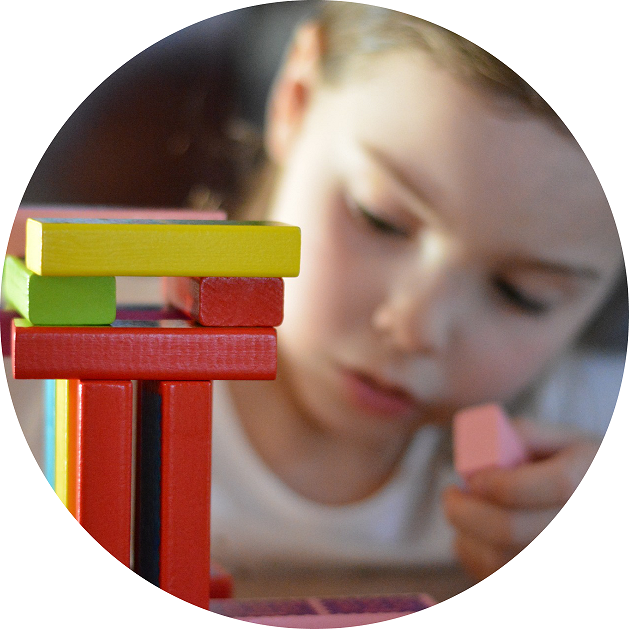
by IABA Team | Aug 17, 2021
Early social skills are emerging as one reliable indicator of ASD. Some research suggests that children who lack social gestures are likely to have pronounced autism traits later on and follow a lower skill trajectory.
In a 2017 study of 199 autistic toddlers and preschoolers, researchers found that the children who made few social-communicative gestures, such as pointing and imitating adults, had more severe autism traits a year later. The research showed these social behaviors predicted autism severity better than repetitive behaviors or living skills.
Conversely, children whose autism traits diminish tend to be relatively social early on. A 2020 study looked at toddlers who sought out social interactions and showed good pointing skills (to indicate objects) who ended up with only mild autism traits as adolescents.
Early Intellectual Abilities & Disabilities
Early intellectual ability can be another early indicator of ASD. In one study, autistic children who had intellectual disability (defined as having an IQ below 70) as toddlers were likely to show substantial difficulties both socially and academically through the age of 14.
On the other hand, children who show a substantial easing of autism traits and advances in life skills tend to be those without intellectual disability, experts say.
Adaptive Behaviors
Adaptive behaviors can also correlate with future academic success. A 2020 study had researchers analyzing records for 98 autistic adults from a study in which clinicians had evaluated daily living and other skills from ages 2 to 26. Using modeling software, the researchers divided the participants into two groups; those with low- and high-daily living skills.
Children in the high-skills group were more likely than those in the low-skills group to continue their education after high school, according to the research.
Socioeconomic Status
Socioeconomic status can be an early indicator of ASD, too. Low-income and minority children with autism tend to have less developed communication and adaptive skills in young adulthood than autistic children from more privileged backgrounds, according to a 2019 report.
Low-income children may have minimal exposure to early intervention programs to address speech, motor, and other difficulties. Family participation in these programs predicts “longer-term outcomes” during adolescence and adulthood.
Genetic Indicators
Many recent studies on genetics may also provide clues to a child’s future. About one-quarter of children with autism have a genetic variant linked to autism. Some of these may give rise to characteristic developmental paths. Data from a 2020 study looked at 65 people with an ASD-linked variant, aged 5 to 21.
The scientists assessed each person’s skill level and combined those data with families’ recollections about when these children had hit early milestones such as walking and talking. The team found that the children’s developmental course depended on the genetic variant they carry.
Children with an ADNP variant show significant motor delays almost across the board, generally not walking until 20 months or later. However, the earlier they do walk, the higher their scores on nonverbal IQ tests in childhood (ages 4 to 16) and young adulthood. In children with a CHD8 variant, early milestones do not predict their cognitive development as reliably. But the earlier they speak in phrases (whether at age 1 or 4, for example) the better their adaptive skills are likely to be in later childhood and young adulthood.
Research is still being conducted and analyzed on the relationship between genes and ASD.
ABA Therapy from IABA Consultants
If you have questions regarding autism treatment with ABA therapy, we are here for you! Our goal is to make sure no family is turned away due to financial constraints. Our therapy team would love to talk to you. Find the location closest to you and give us a call. We’re here for you.
Sources
Mapping the Futures of Autistic Children, spectrumnews.org
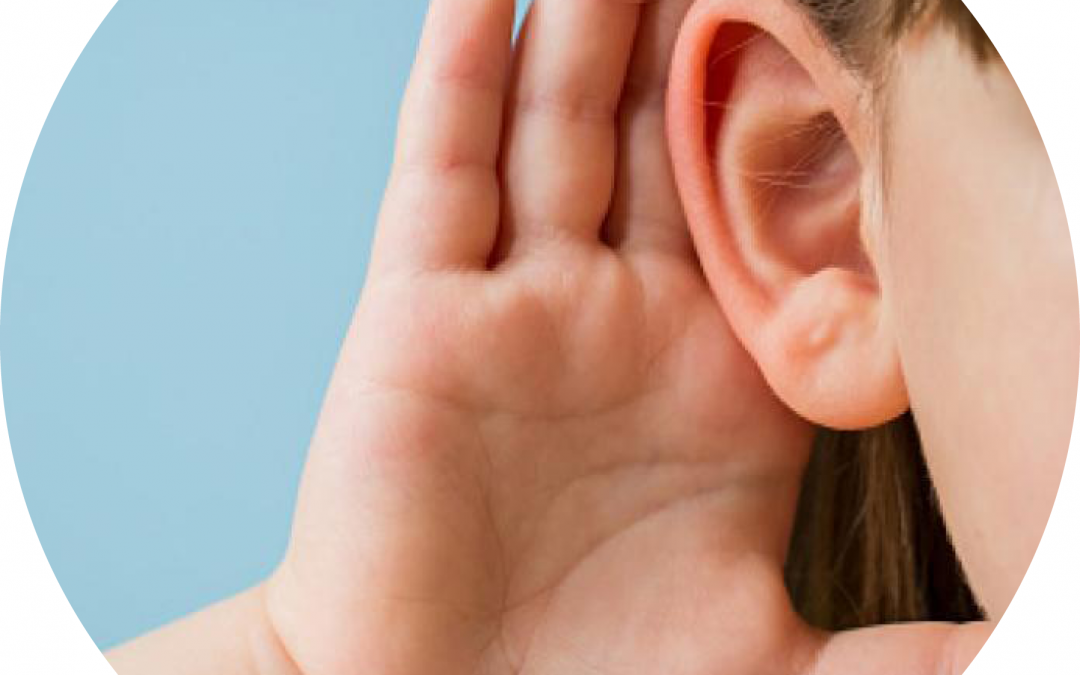
by IABA Team | Aug 10, 2021
What is double empathy and how does it relate to ASD? Click here for Part 1.
Double Empathy & Current Thinking About ASD
The double empathy problem stands at odds with several widely adopted ideas about people with autism, namely that their social difficulties are inherent. For example, one of the main diagnostic criteria for autism, as outlined in the Diagnostic and Statistical Manual of Mental Disorders, is “persistent deficits in social communication and social interaction across multiple contexts.” Similarly, the social motivation theory of autism holds that people with autism have a diminished drive for social interaction.
But the Double Empathy theory isn’t necessarily incompatible with the old ideas. Instead, the theory highlights the importance of examining both sides of social interactions instead of focusing solely on the ways people with autism diverge from the perceived norm.
Is ASD Research Changing in Light of the Double Empathy Problem?
Some modern ASD research is changing due to Double Empathy. For instance, scientists are rethinking how they examine social skills, calling for a revamp of autism studies to gauge the strengths, rather than the limits, of ASD communication. Researchers are also finding ways to probe the dynamics of social interactions instead of studying the isolated behavior of people lying in a brain scanner or sitting at a computer.
In addition, researchers who study predictive coding — the way people form internal models of the external world — are exploring how a mismatch in people’s predictions could hinder their interactions. For example, if a person with autism has expectations about how a conversation might unfold diverge from a neurotypical person’s, their interaction may falter.
Not everyone is convinced, or even aware, of the Double Empathy theory. Some questions at the core of the theory remain unanswered. For example, researchers are still figuring out why communication is smoother when people with autism interact with one another than it is when they engage with neurotypical people. And much of the existing evidence for the theory rests on anecdotal reports and small studies.
Are There Any Implications for ASD Treatment from Double Empathy?
In addition to suggesting new research angles, the double empathy problem may help explain why some autism assessments and treatments fall short. For example, standard measures of social abilities don’t seem to predict how people with autism fare in actual social interactions.
Therapies designed to teach people with autism normative social skills are not all that effective in helping them navigate real-life situations, such as forging friendships, studies suggest. Evaluating social situations surrounding people with autism and finding ways to facilitate their unique communication styles may be a more useful approach, he says.
Similarly, the double empathy problem underscores the importance of training programs — say, for doctors or law enforcement professionals — that help neurotypical people interact appropriately with people with autism. Being routinely misperceived can lead those with ASD to loneliness and feelings of isolation. And attempts to conform to social norms by suppressing who you are can be exhausting, many experts say.
ABA Therapy from IABA Consultants
If you have questions regarding autism treatment with ABA therapy, we are here for you! Our goal is to make sure no family is turned away due to financial constraints. Our therapy team would love to talk to you. Find the location closest to you and give us a call. We’re here for you.
Sources
Double Empathy Explained, spectrumnews.org






